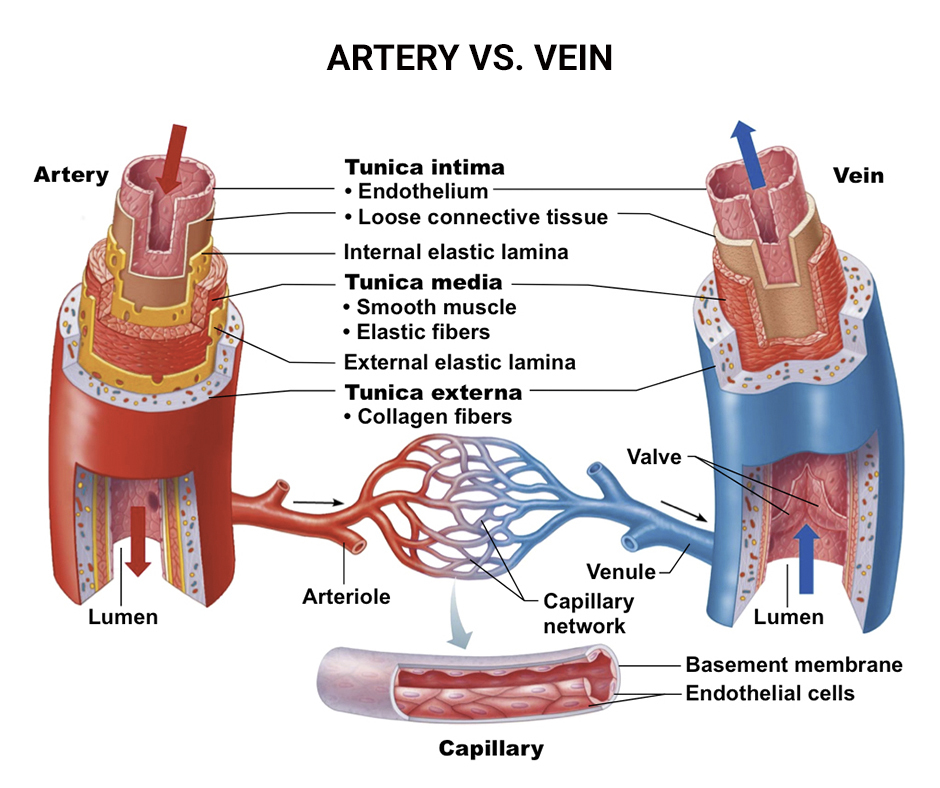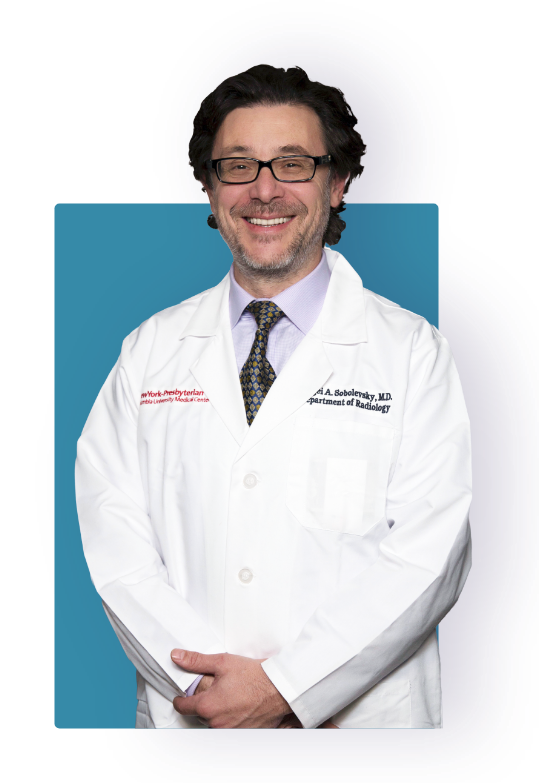The cardiovascular system is crucial for human life, and any malfunctioning of arteries and veins can be severe and even fatal if it is not cared for the right way. Do not waste time in approaching a specialist if you notice swelling in the legs, feet, or ankle, shortness of breath, pain, and numbness, or even cramping. They may be a sign of some cardiovascular or arterial condition and need prompt treatment. At Downtown Vein & Vascular Center, best vein doctors help to diagnose and treat the problem with the most effective solutions to provide long-term relief.
Veins and arteries play a very significant role in the cardiovascular system. They are tube-shaped blood vessels with different structures and functions. Arteries carry blood from the heart to the rest of the body, and the veins collect and carry the blood back to the heart.
Blood vessels are essential for transporting blood around the body. Blood contains oxygen and other nutrients and delivers them to the various tissues that help them function well.
Key Differences Between Arteries and Veins
Veins and arteries help the respiratory and circulatory systems work efficiently. Knowing these systems can help you understand how veins and arteries are different and how they help the body function.

Read more: Why Are My Veins Blue And Green?
What Are Arteries?
Arteries carry the oxygen-filled blood from the heart towards the rest of the body. They branch out into many smaller arteries in other parts of the body.
The largest artery in the body is the aorta. It is the first artery the blood travels through after it gets fresh oxygen from the lungs. The aorta starts from the heart and reaches up towards the neck. A network of smaller arteries branch off from the aorta and go up to the head.
From the head, the aorta curves back down to the chest and continue through the abdomen, ending at the groin. Along the way, it splits off into other arteries that deliver high-oxygen blood to the arms, legs, and rest of the body.
Diseases associated with arteries include atherosclerosis, angina pectoris, and Atherogenesis-myocardial ischemia. They can lead to cardiovascular diseases and stroke if left untreated. You must see an experienced and expert physician avoid serious consequences if you suffer from arterial issues or are at high risk.
What Are Veins?
The oxygen in the blood is delivered to the organs and tissues as it travels through the arteries. Veins carry the blood back to the heart to get more oxygen. The veins usually hold about 75% of all the blood flowing through the body.
The largest veins are the superior and inferior vena cava. The superior vena cava carries blood from the upper body to the heart, while the inferior vena cava carries blood everywhere below the heart. These two veins also branch off into many other veins throughout the body to collect the blood and bring it back to the heart.
As compared to arteries, veins have to work against gravity and push the blood back to the heart from the lower extremities. Valves help the veins in this task. They are one-way pairs of flaps inside a vein, and while they are open for blood that goes up towards the heart, they remain closed to keep the blood from flowing back downwards.
Veins are surrounded by muscles. When we walk, run or use our muscles in performing daily activities, they make squeezing motions that push against the vein and force the blood upwards toward the heart. If veins or the valves in the veins fail to work properly and push blood upwards, blood begins to pool in the legs or lower limbs leading to various vein conditions. It results in discoloration of ankles and swelling, along with other painful symptoms.
Diseases associated with veins include deep vein thrombosis (DVT), varicose veins, and spider veins as well as chronic venous inefficiency that can be managed with non-invasive procedures.
How Arteries and Veins Work Together
Arteries and veins work together to keep up the smooth flow of blood throughout the body. They are connected through structures called capillaries, small webs of thin tubes that connect to an artery on one side and a vein on the other.
Capillaries are present throughout the body. Some parts of the body have more capillaries, depending on how much energy they need. As muscles use a lot more energy than the skin, they have more capillaries.
Arteries have thick elastic muscular walls, and they are usually positioned deeper within the body. Veins have thin non-elastic, less muscular walls, and they are closer or beneath the surface of the skin that making them more visible. About 10% of the total blood volume is in the systemic arterial system at any given time.
Read more: Why You Should Never Ignore Leg Cramps
What Are the Main Differences Between Veins and Arteries?
Understanding the differences between arteries and veins can help you learn more about diagnosing problems relating to the cardiovascular or circulation system. With the right information, you can reach out for medical support in a much better way.
Blood moves quickly through the arteries. The arteries are thicker and stretchable, which makes it easy for them to handle the high pressure of blood moving through them. On the other hand, veins are thinner and less stretchy. Their structure helps them move higher amounts of blood over a longer time than arteries.
When an artery gets cut, blood spurts out at a very high speed. It can result in rapid blood loss due to the higher pressure of blood flowing through them. When a vein is cut, the blood flow is slow, and it can clot, preventing any complications.
Also, the carbon dioxide level is low in the arterial blood as it contains more oxygen, while venous blood contains higher levels of carbon dioxide.
Arteries carry oxygenated blood from the heart to various body parts and body tissues. Veins carry deoxygenated blood from different parts of the body and tissues to the heart to re-oxygenate it. Both arteries and veins work hard to remove wastes from body cells.
The valves in the veins keep the blood flowing towards the heart. These valves play a vital role in legs and arms as they fight gravity and prevent the backflow of blood. Arteries do not need valves as the pressure from the heart keeps the blood flowing in one direction.
If you are at risk of artery or vein disease or suffer from varicose vein symptoms or arterial peripheral artery disease, seek an expert doctor without wasting any time. These symptoms may be a sign of some serious underlying condition and require immediate medical attention. Dr. Sergei Sobolevsky at the Downtown Vein & Vascular Center will focus on accurate diagnosis and come up with the best vein treatment options to ensure that you enjoy life with healthy veins and arteries for years to come.

Sergei Sobolevsky, MD, is a leading specialist in endovascular medicine with experience in vascular and interventional radiology. Dr. Sobolevsky has decades of experience in the field, with over 25,000 procedures performed, accumulating extensive experience in image-guided minimally invasive medicine, diagnosing and treating a range of conditions.
Dr. Sobolevsky earned his Doctor of Medicine (MD) degree in 1997 from the University of Colorado School of Medicine. He received his specialty clinical training in vascular and interventional radiology at Harvard University. Later, he earned his MBA from the MIT Sloan School of Management. Recognized as a Castle Connolly Top Doctor and named to the Top Doctors New York Metro Area in 2020, 2021, and 2022, Dr. Sobolevsky is licensed in multiple states, has delivered presentations at numerous institutions in the US and abroad, and now acts as a clinical advisor for the biomedical industry. He also held multiple positions in the field during his career, including Chief of Vascular and Interventional Radiology at the Columbia University Medical Center in New York, NY, Senior Vice President in Clinical and Regulatory Affairs at Artann Laboratories in North Brunswick, NJ, and Medical Director at the American Endovascular and Amputation Prevention Center in Brooklyn.
More About Dr. Sobolevsky

